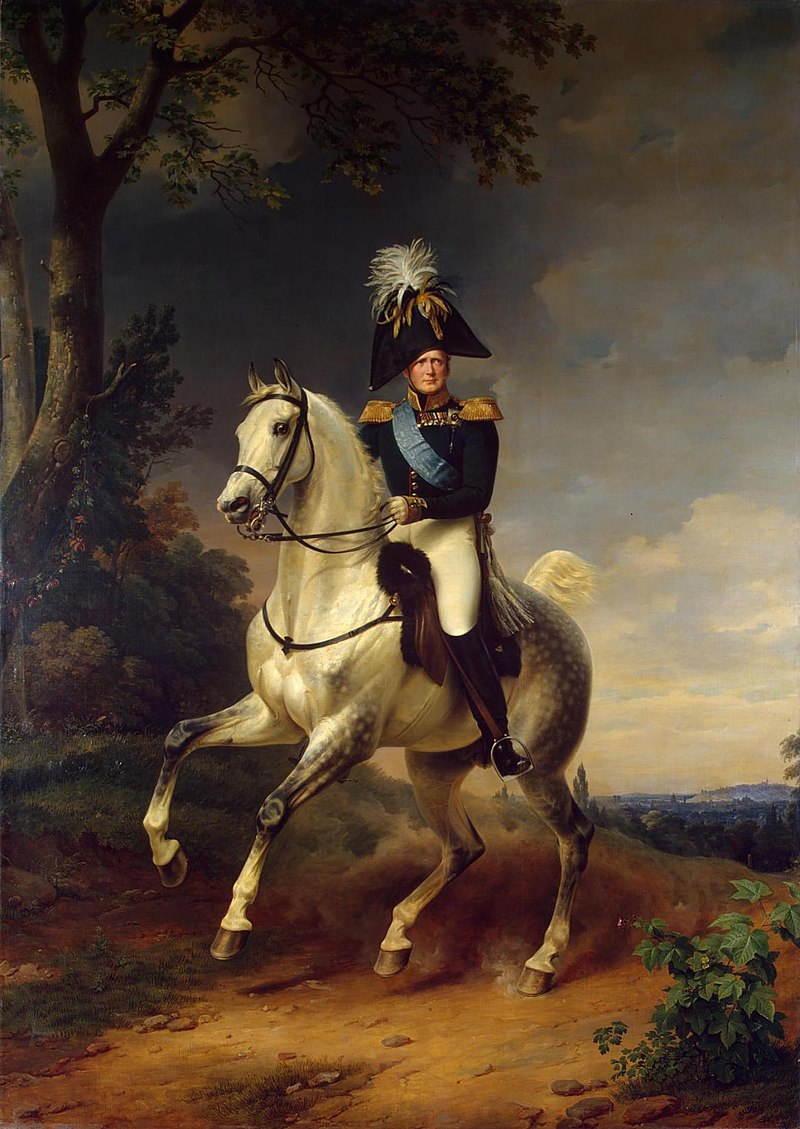Alexander cake (Alexander torte, Alexander tart-s) was created in the 19th century when identifying recipes with political & military figures was a common practice. It was named after the Russian emperor Alexander I (1801-1825) and became very popular on the occasion of the Czar's visits to Finland and the Baltic lands in 1819. Its origins are debated between Finland and Latvia although it's possible that Alexander cake was invented elsewhere.
 |
| Alexander I of Russia - in 1814 |
in Finland
Aleksanterinleivos (or alexanterintortut) is typically filled with apple jam but other kinds of preserve can also be used. The glazing is white but several adaptations go for pink, after the Ekberg bakery version.
 |
| The Ekberg bakery on Aleksanterinkatu - 1899 |
outside Finland
Alexander cake is also popular in the Baltic lands (that were already part of the Russian Empire during the 19th century) as well as Scandinavia.
The Latvian version is called Alexandra kūka. It was created for Alexander III's visit to Riga. The date of his visit is unknown but he was czar between 1881 and 1894. He was not so liberal-minded as his great-uncle Alexander I (who had also been to Latvia in 1819) or his father Alexander II but his presence in the capital of Latvia was certainly a great event. Alexandra kūka was brought into the English-speaking world by Latvian immigrants. It's no different from aleksanterinleivos but the filling is always raspberry preserve. Modern adaptations will sometimes be topped with chocolate icing.
The Estonian version is called Alexandrikook. It's exactly the same as the Latvian dessert.
The Danish version is called hindbærsnitte ('raspberry slices') and is no different from Alexandra kūka. It doesn't bear the name of a Russian emperor though Alexander III was married to a Danish princess and often went to Copenhagen. (He also spent time in Finland.)
The Estonian version is called Alexandrikook. It's exactly the same as the Latvian dessert.
The Danish version is called hindbærsnitte ('raspberry slices') and is no different from Alexandra kūka. It doesn't bear the name of a Russian emperor though Alexander III was married to a Danish princess and often went to Copenhagen. (He also spent time in Finland.)
The Swedish version is called Alexandertårta. It was probably adapted from the Finnish recipe although it's not certain if this happened during the reign of Alexander I. In fact, the loss of southwest Finland, which had been part of Sweden for 600 years before it was ceded to Russia in 1809, was much regretted by the Swedes (leading to major changes on their political scene). Alexandertårta is an open tart filled with almond paste, which is spread on a layer of jam and decorated with a lattice pattern.
ALEXANDER CAKE
This recipe was adapted from The Finnish Cookbook by Beatrice Ojakangas. The cake is glazed after it's sliced but this can also be done the other way round.
for the dough
400g flour
200g butter
100g sugar
1 egg
for the filling
100g red fruit jam
for the icing
200g sugar
1tsp cornflour
1-2tbsp water
1-2tbsp red fruit jam
M e t h o d
1. Preheat the oven to 175C. Line a baking sheet with parchment paper. 2. Mix the butter, sugar, and egg. Add the flour and knead until you have a soft dough. 3. Roll out on the prepared sheet. Bake until golden, about 20 minutes. 4. Divide into halves. Place the first half on a dish. Spread with the jam and cover with the second half. 5.
To make the icing: Powder the sugar, along with the cornflour. (I used a
food processor.) Stir in as much water and jam needed until you have a
rose-colored paste. 6. Cut the biscuit into large square pieces and cover with icing.
V a r i a t i o n
Alexandertårta. 1. Make the dough with 400g flour, 200g butter, 100g sugar, and 1 egg. Press 2/3 of the dough into a round tart pan. Chill the rest. 2. Spread the bottom of the tart with 100g raspberry (or apricot) jam. 3. Combine 200g almond paste, 50g butter, 50g confectioner's sugar, and 1 egg. Spread on top of the jam filling. 4. Roll out the chilled dough. Cut into stripes and decorate the tart in a lattice pattern. 5. Bake at 175C for 30-40 minutes. 6. Glaze each square with a little jam. This recipe is adapted from Cakes, Cookies & Bread from Sweden by Görel Kristina Näslund.

Comments